by Martin J. Greenberg and Michael R. Gavin
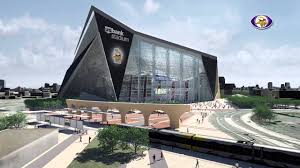 Whenever public funds are either suggested or utilized for the public funding of a professional sports facility, a “stadium debate” ensues. Public funding nay-sayers will proclaim that governmental units are mortgaging their future and dedicating unnecessary public subsidies, i.e. sports pork, to benefit private enterprise and to enrich the pockets of millionaire players and billionaire owners. When the benefits of economic impact and job benefits are proclaimed, nay-sayers will point to numerous studies that simply indicate that the economic benefits of new facilities are simply overplayed.
Whenever public funds are either suggested or utilized for the public funding of a professional sports facility, a “stadium debate” ensues. Public funding nay-sayers will proclaim that governmental units are mortgaging their future and dedicating unnecessary public subsidies, i.e. sports pork, to benefit private enterprise and to enrich the pockets of millionaire players and billionaire owners. When the benefits of economic impact and job benefits are proclaimed, nay-sayers will point to numerous studies that simply indicate that the economic benefits of new facilities are simply overplayed.
Often in the “stadium debate,” the question arises as to what return the public receives for helping to underwrite stadiums and arenas for privately owned professional teams. The return may be in being one of those select cities to have a major league franchise or simply psychic in nature in being “big league.” The monetary return, however, is more difficult to quantify in that publicly supported venues are normally paid through the imposition or extension of a tax.
The new home of the Minnesota Vikings, U.S. Bank Stadium, opened in July of 2016 in the Downtown East section of Minneapolis, and later hosted its first regular season football contest between the Green Bay Packers and the Minnesota Vikings.[1] The stadium’s construction cost was $1.087 billion, of which approximately forty-six percent ($498 million) was provided through public sources:
(1) $150 million through the City of Minneapolis: The City’s contribution will be paid to the Minnesota Sports Facility Authority (MSFA) by issuing appropriation bonds, and those bonds will be repaid to the “State by redirecting a portion of the current ‘Convention Center Taxes.’”[2]
(2) $348 million from the State of Minnesota: The State issued appropriation bonds valued at $462 million and the remaining of the $498 million public contribution will be paid for by State funds.[3]
(3) Public contribution remainder: “The remaining amount of the appropriation bonds will be repaid to the bondholders from other sources available to the state, including the modernization of state-authorized charitable gaming that includes electronic pull-tabs and bingo and a one-time inventory tax on cigarettes, which raised approximately $36 million.”[4]
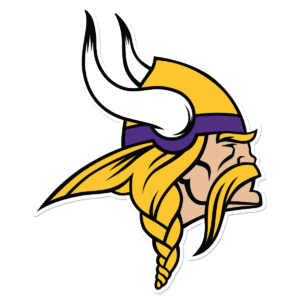 On October 3, 2013, the MSFA and Minnesota Vikings Football, LLC (“Vikings”) entered into both a Development Agreement and a Stadium Use Agreement to construct the Vikings’ new stadium.[5] On June 15, 2015, the Vikings announced that the team and U.S. Bank signed a twenty-year, $220 million, Naming Rights Agreement for the Vikings’ new stadium, U.S. Bank Stadium.[6] Under this Stadium Use Agreement between the MSFA and the Vikings, there is a contractual clause that affects both the salability of the Vikings and the public’s future financial interest: the so-called “Windfall Clause.”
On October 3, 2013, the MSFA and Minnesota Vikings Football, LLC (“Vikings”) entered into both a Development Agreement and a Stadium Use Agreement to construct the Vikings’ new stadium.[5] On June 15, 2015, the Vikings announced that the team and U.S. Bank signed a twenty-year, $220 million, Naming Rights Agreement for the Vikings’ new stadium, U.S. Bank Stadium.[6] Under this Stadium Use Agreement between the MSFA and the Vikings, there is a contractual clause that affects both the salability of the Vikings and the public’s future financial interest: the so-called “Windfall Clause.”
When a team gets a new stadium, normally not only will its revenues increase, but also its capitalized value. Part of that increase is believed to be due in fact to the public participation and contribution to the stadium equation. The Windfall Clause seeks to prevent owners from cashing out quickly if the value of the team, the new stadium, and the surrounding area experiences immediate financial growth.[7] A Windfall Clause is a contractual means for the public to recoup some of its investment into the funding of the stadium, i.e., a payback.
The Windfall Clause can be found in Section 23.2 of the Stadium Use Agreement, entitled “Team Payment to the State and City upon Sale of the Team,” and states that:
(a) Payment Amounts. If, after the Effective Date, the Team sells to one or more third party persons in a single transaction or a series of transactions (i) more than fifty percent (50%) of the outstanding equity in the Team, or (ii) more than fifty percent (50%) of the assets of the Team (each, a “Sale”), the Team shall pay to the State and the City, in amounts proportionate to the expenditures made by the State and from City taxes, an aggregate payment equal to a percentage of the amount received in the Sale by the selling owner or owners in excess of the purchase price of the Team paid by the selling owner or owners (such percentage of the excess above the purchase price of the Team, the “Premium”), as follows:[8]
- If the Sale occurs on or before May 14, 2022, the Premium shall be twenty-five percent (25%);
- If the Sale occurs after May 14, 2022 and on or before May 14, 2027, the Premium shall be fifteen percent (15%);
- If the Sale occurs after May 14, 2027 and on or before May 14, 2032, the Premium shall be ten percent (10%); and
- If the Sale occurs after May 14, 2032, there shall be no Premium.[9]
There are, however, exceptions to these payment obligations to Minnesota and the City of Minneapolis, including:
(b) Transactional Exceptions to Payment Obligation to State and City. The following Sales are not subject to Section 23.2(a) above:
- Sales occurring after May 14, 2032;
- Sales to (A) family members of the owners of the Team; (B) trusts and entities beneficially owned by the family members of owners of the Team; (C) employees of the Team; provided, that such interests transferred do not exceed ten percent (10%) of the equity interest of the Team;
- Sales or pledges of interests in the Team for the purpose of generating capital for the Team that is not distributed to the owners of the Team;
- Transfers of interests among or between Persons who were owners of the Team on May 14, 2012, not exceeding in the aggregate twenty percent (20%) of the total equity interest in the Team; or
- Transfers or Sales that arise in connection with the death of an owner and the administration and distributions of the estate of such deceased owner.[10]
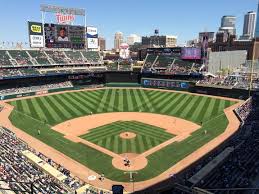 In Minnesota, there is a precedent for the inclusion of a Windfall Clause in the Minnesota Vikings lease. A similar clause was included in the “Baseball Playing and Use Agreement” between the Minnesota Twins and the Minnesota Ballpark Authority for Target Field dated April 26, 2007, entitled Section 2.4, “Sale of Team:”
In Minnesota, there is a precedent for the inclusion of a Windfall Clause in the Minnesota Vikings lease. A similar clause was included in the “Baseball Playing and Use Agreement” between the Minnesota Twins and the Minnesota Ballpark Authority for Target Field dated April 26, 2007, entitled Section 2.4, “Sale of Team:”
(a) In the event there is a Sale during the period beginning on May 27, 2006 and ending on the tenth anniversary of the Construction Start Date, the Team shall be obligated to pay the Authority an amount equal to a certain percentage, as specified below, of the gross sales price resulting from the Sale (the “Team’s Sale Percentage”), which amount shall be deposited in the CapEx Reserve Fund and credited against any future funding obligations of either the Authority or the County to such CapEx Reserve Fund. During the twelve (12)-month period immediately following the Construction Start Date, the Team’s Sale Percentage shall be equal to eighteen percent (18%), reduced by one and eight-tenths (1.8) upon each anniversary of the Construction Start Date, until the amount of the Team’s Sale Percentage is reduced to zero. After the tenth anniversary of Construction Start Date the Team shall no longer have any payment obligation to the Authority under this Section following any Sale; provided, however, that this sentence shall not release the Team from any other obligation arising prior to or upon any Sale.
(b) Except as otherwise required herein (e.g., in the event a Sale is subject to the Right of First Refusal set forth in Section 2.5 hereof), the Team shall use commercially reasonable efforts to give the Authority written notice of any Sale within thirty (30) days prior to the Sale and shall, in all events, give the Authority written notice of any Sale within ten (10) days thereafter.
(c) In the event of any Sale or Exempt Transfer, the successor in interest shall become bound to the terms and conditions of this Agreement, the Ballpark Lease Agreement, and any other Related Agreements pursuant to the provisions of Article 3, below.
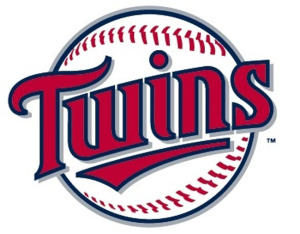 Target Field opened in 2010, and cost approximately $544.4 million to construct, of which $392 million was provided via a Hennepin County-wide sales tax increase of 0.15 percent.[11] Zygi Wilf (“Wilf”) and his partners purchased the Minnesota Vikings for $600 million in 2005.[12] In September of 2016, the team was valued by Forbes at $2.2 billion.[13] The Minnesota Twins were purchased by the Pohlad family in 1984 for $44 million, and according to Forbes, the Twins have a value of $910 million as of March 2016.[14]
Target Field opened in 2010, and cost approximately $544.4 million to construct, of which $392 million was provided via a Hennepin County-wide sales tax increase of 0.15 percent.[11] Zygi Wilf (“Wilf”) and his partners purchased the Minnesota Vikings for $600 million in 2005.[12] In September of 2016, the team was valued by Forbes at $2.2 billion.[13] The Minnesota Twins were purchased by the Pohlad family in 1984 for $44 million, and according to Forbes, the Twins have a value of $910 million as of March 2016.[14]
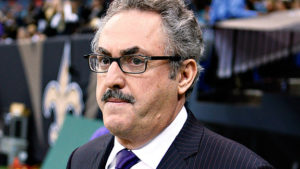 Indeed, the Windfall Clauses for the Twins and the Vikings substantially differ. The public would get as much as eighteen percent (18%) of the team’s overall sale price under the Twins’ provision. Under the Vikings’ provision, the public would receive up to twenty-five percent (25%) of the owners’ profit from a sale. In terms of a return on public funding, this is a very considerable distinction because of the difference between sale price and profit. In the case of Target Field, the public would receive 18% of the overall sales price initially, but that amount drops by increments of 1.8 percent annually and reaches zero in ten years. For the Vikings, the public could potentially receive 25% percent of the profit generated, but the amount would fall by ten percent (10%) in the initial five-year span and the amount will decrease by another five percent (5%) in the second elapsed five years under the Vikings’ Stadium Use Agreement. The Vikings agreement will reach zero profit percentage in fifteen years.
Indeed, the Windfall Clauses for the Twins and the Vikings substantially differ. The public would get as much as eighteen percent (18%) of the team’s overall sale price under the Twins’ provision. Under the Vikings’ provision, the public would receive up to twenty-five percent (25%) of the owners’ profit from a sale. In terms of a return on public funding, this is a very considerable distinction because of the difference between sale price and profit. In the case of Target Field, the public would receive 18% of the overall sales price initially, but that amount drops by increments of 1.8 percent annually and reaches zero in ten years. For the Vikings, the public could potentially receive 25% percent of the profit generated, but the amount would fall by ten percent (10%) in the initial five-year span and the amount will decrease by another five percent (5%) in the second elapsed five years under the Vikings’ Stadium Use Agreement. The Vikings agreement will reach zero profit percentage in fifteen years.
Ted Mondale (“Mondale”), Governor Mark Dayton’s chief stadium negotiator, downplayed the difference when asked by a legislator about the differences between the two clauses at the Vikings’ stadium’s first hearing at the State Capitol.[15] Mondale said that the Vikings’ Windfall Clause regarding the public’s share in a sale was “pretty close to the same language . . . that the Pohlads struck.”[16] He told lawmakers that the clause was “‘a recognition that we put state investment here [and] that the state would get a buyback if there was a windfall’ from the sale of the team.”[17] Mondale also said that “Wilf had paid substantially more for the Vikings than Pohlad paid for the Twins.”[18] Pohlad and his partners paid $36 million when they purchased the Twins in 1984.[19] Of the initial $480 million cost for Target Field, the taxpayers contributed $350 for the stadium, which opened in 2010.[20] For the Vikings’ new stadium, Wilf and the Vikings contributed approximately $577 million, which amounts to fifty-three percent of the up-front project capital costs.[21]
Minnesota’s professional sports teams are not the only teams that have agreed to a Windfall Clause. In 2009, then Florida Marlins, now Miami Marlins, sought public assistance from the City of Miami and Dade County, and the Marlins promised as part of their Use Agreement “to share in the proceeds of a team sale on a sliding scale (70 percent of the profit in year one, 60 percent in year two, 50 percent in year three, 5 percent in year five).”[22] The promise to share profits extended over a nine-year period, and in the last year of the profit sharing arrangement, the public would receive five percent of the profit.[23]
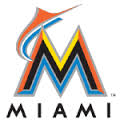 Even though the St. Louis Cardinals did not receive any public money and essentially built Busch Stadium with their own funds, they did, however, receive certain tax breaks. As a result, the Cardinals, in an agreement entitled “Operations and Non-relocation Agreement,” promised St. Louis a profit sharing arrangement.[24]
Even though the St. Louis Cardinals did not receive any public money and essentially built Busch Stadium with their own funds, they did, however, receive certain tax breaks. As a result, the Cardinals, in an agreement entitled “Operations and Non-relocation Agreement,” promised St. Louis a profit sharing arrangement.[24]
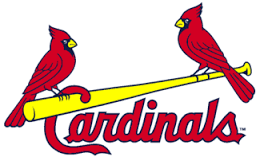 Article IX (“Sale of the Team”) of St. Louis City Ordinance 65447 by and between the State of Missouri, the City of St. Louis, Missouri, St. Louis County, Missouri, and the St. Louis Cardinals, L.P. states as follows:
Article IX (“Sale of the Team”) of St. Louis City Ordinance 65447 by and between the State of Missouri, the City of St. Louis, Missouri, St. Louis County, Missouri, and the St. Louis Cardinals, L.P. states as follows:
Section 9.1 Sale of Team. Subject to the provisions of this Article, the Cardinals shall have the right to sell or transfer ownership in whole or in part of the Team during the Term to the extent permitted by Major League Baseball without any Public Participant’s or the Authority’s consent; provided that (a) in connection with such sale, the new Team owner must concurrently agree in writing, in form and substance reasonably acceptable to the Public Participants and the Authority, to assume the Cardinals’ obligations under this Agreement, the Lease and any Related Agreements for the remainder of the Term (unless waived by the Public Participants and the Authority) and (b) the provisions of Section 9.2 shall not apply to the new Team owner. In addition, the Cardinals covenant and agree that the Cardinals shall not transfer, sell or assign the Team in any manner unless such transfer of the Team is approved in accordance with applicable Major League Baseball Rules and Regulations.
Section 9.2 Sharing of Ballpark-Related Profits from Sale.
(a) In the event that there is a Sale in whole or in part of any ownership interest in the Cardinals Ownership Entities, the Cardinals shall cause the Selling Owner(s) to pay to the Public Participants (on a pro rata basis in accordance with their respective contributions to the Ballpark Project Construction Fund) the Ballpark-Related Profits. By way of example and without limitation, the Ballpark-Related Profits from the Sale of the total ownership interests of the Cardinals Ownership Entities are set for in Exhibit ____.
(b) Not later than 30 days after the consummation of a Sale, the Cardinals shall furnish to the Public Participants a notice setting forth their determination of the amount, if any, due pursuant to this Section 9.2. If none of the Public Participants object to such determination within 30 days following receipt of such notice, the Cardinals’ determination shall be final and binding, and payment of the amount, if any, due shall be made not later than 15 days after the expiration of the latter 30-day period. If any Public Participant objects to such determination, the notice of objection shall specify in reasonable detail the basis for such objection. The objecting Party and the Cardinals shall thereupon seek to resolve such disagreement and, if they are unable to resolve the disagreement within 30 days following the Cardinals’ receipt of notice of such objection, then their disagreement shall be settled by arbitration in accordance with Section 13.4 of this Agreement.
(c) For purposes of this Section, the following terms have the meaning set forth below.
“Ballpark-Related Percentage” means the percentage corresponding to the Owners’ Total Profits as follows:
| Owners’ Total Profits |
Ballpark-Related Percentage |
| $0-$299,999,999 |
12% |
| >$300,000,000 – $599,999,999 |
14% |
| $600,000,000 or more |
16% |
“Ballpark-Related Profits” means the greater of (i) the Selling Owner(s)’ Pro Rata Share of $2,500,000, or (ii) the product of (x) the Ballpark-Related Percentage, and (y) the amount by which the gross cash proceeds received by the Selling Owner(s) pursuant to the Sale exceed the Base Amount; provided that (1) the Ballpark-Related Profits shall be reduced by a percentage equal to the product of (A) one-ninth (1/9) and (B) the number of full calendar years following January 1, 2005 after which the applicable Sale occurs, and (2) there shall be no Ballpark-Related Profits if such gross cash proceeds received by the Selling Owner(s) are less than the Base Amount.
“Base Amount” means the Selling Owner(s)’ Pro Rata Share of $180,000,000 (agreed by the Parties to be the fair market value of the equity of the Cardinals Ownership Entities), including the value of the land underlying the Ballpark; provided that the Base Amount shall be (i) increased by any contribution in cash or other property (excluding the land underlying the Ballpark) by a Selling Owner(s) to the Cardinals Ownership Entities after January 1, 2002, to the extent that it is attributable to the ownership interest subject to the Sale, including, without limitation, any tax payments made by the Selling Owner(s) for any income derived from such ownership interest (excluding the Sale thereof) that are not reimbursed by the Cardinals Ownership Entities, and (ii) decreased by any distribution of cash or other property by the Cardinals Ownership Entities to a Selling Owner(s) after January 1, 2002, to the extent that it is attributable to the ownership interest subject to the Sale, excluding any distributions necessary for the Selling Owner(s) to make tax payments for any income derived from such ownership interest (excluding the Sale thereof).
“Cardinals Ownership Entities” means SLC Holdings, LLC and Gateway Group, Inc. (which entities own all of the equity interests of St. Louis Cardinals, L.P. as of January 1, 2002), and any successors or assigns of such entities (by reorganization or otherwise).
“Owners’ Total Profits” means the (i) excess of the gross cash proceeds received by the Selling Owner(s) pursuant to the Sale over the Base Amount, divided by (ii) the Selling Owner(s)’ Pro Rata Share (i.e., the aggregate profits assuming a Sale of the total ownership interests of the Cardinals Ownership Entities).
“Sale” means any sale, transfer or assignment by one or more Selling Owner(s) of any direct or indirect ownership interest in the Cardinals Ownership Entities to a Person(s) that is not an owner or immediate family member of an owner of any direct or indirect ownership interest in the Cardinals Ownership Entities as of January 1, 2002, and which sale, transfer or assignment would be subject to approval by the governing body of Major League Baseball.
“Selling Owner” means an owner of a direct or indirect ownership interest in the Cardinals Ownership Entities as of January 1, 2002 who sells, transfers or assigns all or any part of such interest pursuant to a Sale.
“Selling Owner(s)’ Pro Rata Share” means the percentage of the total equity interests of the Cardinals Ownership Entities being sold, transferred or assigned by the Selling Owner(s) pursuant to a Sale.[25]
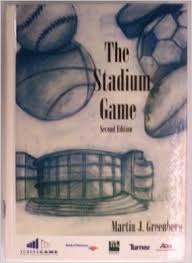 A controversy subsequently ensued when thirteen percent (13%) of the team was sold and the City of St. Louis did not participate in any profit sharing.[26] In a brief statement, Mike Whittle, general counsel for the Cardinals, said “[t]here’s nothing owed [to] the city.”[27] The Windfall Clause was based upon 2002 agreements between the City of St. Louis and the Cardinals relative to tax breaks that included the complete abatement of taxes and twenty-five years of real estate tax relief. Actually to date, about seven percent of Cardinal shares have been sold since the new stadium opened, but in each case, it was reported to the City of St. Louis that “there were no Ball-Park-Related profits . . . arising from such transfer.”[28]
A controversy subsequently ensued when thirteen percent (13%) of the team was sold and the City of St. Louis did not participate in any profit sharing.[26] In a brief statement, Mike Whittle, general counsel for the Cardinals, said “[t]here’s nothing owed [to] the city.”[27] The Windfall Clause was based upon 2002 agreements between the City of St. Louis and the Cardinals relative to tax breaks that included the complete abatement of taxes and twenty-five years of real estate tax relief. Actually to date, about seven percent of Cardinal shares have been sold since the new stadium opened, but in each case, it was reported to the City of St. Louis that “there were no Ball-Park-Related profits . . . arising from such transfer.”[28]
It should be noted that a Windfall Clause is different than entrepreneurial sharing on the sale of a franchise. In my book The Stadium Game,[29] I outlined two examples of actual profit sharing upon the sale of a team utilizing the Colorado Rockies and the Seattle Mariners as examples, which are shown below:
 The Colorado Rockies lease also requires an entrepreneurial sharing by the Lessor in the event of a sale of the franchise, including a specific payment to the District upon the sale of the franchise, or eighty (80%) percent of the interests in the Partnership, an amount equal to two (2%) percent of the net profit realized by the Partnership or the partners of the Partnership, not to exceed $2 million; provided that: (i) net profit will be computed after return of all partners’ capital plus a five (5%) percent imputed return thereon; (ii) the sale of the franchise to any person or entity (or any affiliate thereof) who has been a partner in the Partnership for at least three (3) years prior to the subject sale will not activate the profit sharing provision; and (iii) individual sales of Partnership interests in the Partnership and sale of stock of the general partner of the Partnership will not trigger the profit sharing provision.[30]
The Colorado Rockies lease also requires an entrepreneurial sharing by the Lessor in the event of a sale of the franchise, including a specific payment to the District upon the sale of the franchise, or eighty (80%) percent of the interests in the Partnership, an amount equal to two (2%) percent of the net profit realized by the Partnership or the partners of the Partnership, not to exceed $2 million; provided that: (i) net profit will be computed after return of all partners’ capital plus a five (5%) percent imputed return thereon; (ii) the sale of the franchise to any person or entity (or any affiliate thereof) who has been a partner in the Partnership for at least three (3) years prior to the subject sale will not activate the profit sharing provision; and (iii) individual sales of Partnership interests in the Partnership and sale of stock of the general partner of the Partnership will not trigger the profit sharing provision.[30]
 The Denver Broncos’ new Lease Agreement with the Metropolitan Football Stadium District also has such a provision. Article 33 of the Lease Agreement states:
The Denver Broncos’ new Lease Agreement with the Metropolitan Football Stadium District also has such a provision. Article 33 of the Lease Agreement states:
Sale of Franchise. PDB agrees that upon the sale of the franchise or 80% of the beneficial interest in the entity owning the franchise, to pay to the District as a one‑time payment, an amount equal to the Sharing Amount with the funds to be used for youth activity programs. Sharing Amount means an amount equal to 2% of the net profit realized by PDB or the franchise or the persons or entities selling the interest. The Sharing Amount shall not be less that $1,000,000. Net profit means the gross proceeds of the sale less capital contributions to the franchise (or capital contributions of the person’s selling interests, plus six percent imputed annual return on such capital contributions and less franchise debt if such debt is not assumed or paid by the purchasing entity. Individual sales of the franchise’s beneficial interests will not trigger this profit‑sharing provision if such sales do not, over a one‑year period, result in the sale of eighty percent or more of the beneficial interests of the franchise to a person or entity or related persons or entities that have not been beneficial owners of interests of this franchise.[31]
The Seattle Mariners also have a clause dealing with the sale of the franchise. Section 16.2 of the Lease Agreement states:
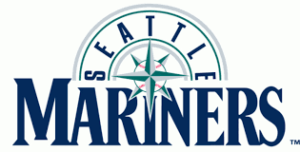 Profit Sharing on Sale of Club. Upon sale of the Club (or eighty percent (80%) or more of the beneficial interests in the Club) during the Term, the Club shall pay to the PFD an amount equal to twenty (20%) of the Net Profit realized by the Club or the selling partners or beneficial owners of the Club, as the case may be, not to exceed $20 million. “Net Profit” shall be the gross proceeds of the sale less (i) capital contributions (or capital contributions of partners selling their beneficial interests) to the Club (net of any distributions made by the Club to the selling partners), (ii) an eight percent (8%) imputed annual return on such net capital contribution(s), compounded annually from the date that each such contribution was made, (Iii) the principal balance then outstanding under all Club debt not assumed or paid by the purchasing entity, and (iv) all costs of sale. The sale of the Club (or eighty percent (80%) or more beneficial interests in the Club) to any Person (or any affiliate thereof) which is a partner or a stockholder of a partner on the date of this Agreement or who has been a partner or a stockholder of a partner in the Club for at least two (2) years prior to the subject sale will not trigger this profit‑sharing provision. Individual sales of interests in the Club and sales of stock of the general partner of the Club will not trigger this profit‑sharing provision, provided such sales do not result in the sale or a series of sales over a two (2) year period of eighty percent (80%) or more of the beneficial interests in the Club to a Person or related Persons that have not been a partner or partners in the Club for at least two (2) years prior to the initial sale, or as of the date of this Agreement, of any beneficial interest to such Person(s). Nothing in this Article 16.2 shall be interpreted as limiting the Club’s obligations or the PFD’s rights set forth in Article 16. 1.[32]
Profit Sharing on Sale of Club. Upon sale of the Club (or eighty percent (80%) or more of the beneficial interests in the Club) during the Term, the Club shall pay to the PFD an amount equal to twenty (20%) of the Net Profit realized by the Club or the selling partners or beneficial owners of the Club, as the case may be, not to exceed $20 million. “Net Profit” shall be the gross proceeds of the sale less (i) capital contributions (or capital contributions of partners selling their beneficial interests) to the Club (net of any distributions made by the Club to the selling partners), (ii) an eight percent (8%) imputed annual return on such net capital contribution(s), compounded annually from the date that each such contribution was made, (Iii) the principal balance then outstanding under all Club debt not assumed or paid by the purchasing entity, and (iv) all costs of sale. The sale of the Club (or eighty percent (80%) or more beneficial interests in the Club) to any Person (or any affiliate thereof) which is a partner or a stockholder of a partner on the date of this Agreement or who has been a partner or a stockholder of a partner in the Club for at least two (2) years prior to the subject sale will not trigger this profit‑sharing provision. Individual sales of interests in the Club and sales of stock of the general partner of the Club will not trigger this profit‑sharing provision, provided such sales do not result in the sale or a series of sales over a two (2) year period of eighty percent (80%) or more of the beneficial interests in the Club to a Person or related Persons that have not been a partner or partners in the Club for at least two (2) years prior to the initial sale, or as of the date of this Agreement, of any beneficial interest to such Person(s). Nothing in this Article 16.2 shall be interpreted as limiting the Club’s obligations or the PFD’s rights set forth in Article 16. 1.[32]
Certainly a Windfall Clause could ease the pain of the public process in generating public funds to help construct a sports facility by promising the public a guaranteed return in the event that a quick profit is made by the team’s owners. Generally, a new stadium will enhance the team’s revenues, increase capitalized value, and generate surrounding economic and real estate development. The Windfall Clause is essentially a promise to permit the public to get a guaranteed return on their investment in the event the owner cashes out quickly. However, the idea of profit sharing upon the sale of the team for the public’s contribution, i.e., a partnership of sorts, may in the future ease the process, along with the animosity and time it takes to construct the public-private partnership.
Michael R. Gavin is currently a third-year law student at Marquette University, where he is focusing on Sports Law. In addition to being a 2017 Juris Doctor candidate, Gavin is also a 2017 Sports Law Certificate candidate at Marquette through the National Sports Law Institute. Gavin serves as Executive Editor of the Marquette Sports Law Review (Volume 27), and is a member of both the Sports Law Society and the Business Law Society at Marquette. Prior to Marquette, Gavin earned his bachelor of arts in Accounting from Washington & Jefferson College (Washington, PA), with a concentration in Entrepreneurial Studies. Outside of law school, Gavin is a practicing accountant at Building Control Parts, LLC, where he focuses on inventory control, and advises the firm on financial matters and operational processes.
[1] Hannah Covington, U.S. Bank Stadium Open House Swamped with Soggy Visitors, StarTribune.com (July 23, 2016), http://www.startribune.com/u-s-bank-stadium-open-house-swamped-with-visitors-storms/388030792/#1; 2016 Regular Season Schedule, Minnesota Vikings, http://www.vikings.com/schedule/season-schedule.html (last visited Oct. 2, 2016).
[2] Frequently Asked Questions, Vikings.com, http://www.vikings.com/stadium/new-stadium/faq.html (last visited Oct. 2, 2016).
[3] Id.
[4] Id.
[5] Vikings and MSFA Sign Major Agreements on New Stadium, Vikings.com (Oct. 3, 2013), http://www.vikings.com/news/article-1/Vikings-and-MSFA-Sign-Major-Agreements-on-New-Stadium/ac9393bd-ae65-41bb-a615-774753c5cc67.
[6] Rochelle Olson, U.S. Bank Has Deal for Naming Rights on New Vikings Stadium, StarTribune.com (June 16, 2015), http://www.startribune.com/report-us-bank-vikings-sign-naming-rights-deal-worth-9-million-annually-to-the-team/307444581/.
[7] Brian Bakst, Fine Print in Vikings Deal Leaves Little to Chance, cnsnews.com (Oct. 8, 2013), http://www.cnsnews.com/news/article/fine-print-vikings-deal-leaves-little-chance.
[8] Stadium Use Agreement By and Between Minnesota Sports Facilities Authority & Minnesota Vikings Football, LLC. Effective date: Oct. 3, 2013.
[9] Id. at § 23.2(a)(i-iv).
[10] Id. at § 23.2(b).
[11] Target Field, ballparks.com, http://www.ballparks.com/baseball/american/minbpk.htm (last visited Feb. 12, 2016).
[12] Kevin Seifert, Forbes: Vikings’ Value Rises with Stadium, NFC North – ESPN (Sept. 5, 2012), http://espn.go.com/blog/nfcnorth/post/_/id/45760/forbes-vikings-value-rises-with-stadium.
[13] Minnesota Vikings on the Forbes NFL Team Valuations List, Forbes, http://www.forbes.com/teams/minnesota-vikings/ (last visited Oct. 2, 2016).
[14] Minnesota Twins on the Forbes MLB Team Valuations List, Forbes, http://www.forbes.com/teams/minnesota-twins/. (last visited Sept. 28, 2016).
[15] Mike Kaszuba, Stadium Plan Gives Public Less in Vikings’ Sale Compared to Twins’, StarTribune.com (Mar. 21, 2012), http://www.startribune.com/stadium-plan-gives-public-less-in-vikings-sale-compared-to-twins/143587106/.
[16] Id.
[17] Id.
[18] Id.
[19] Id.
[20] Id.
[21] Frequently Asked Questions, supra note 2.
[22] Kevin Reichard, Marlins Agree to Share in Sale Proceeds on Eve of City Vote on New Ballpark, Ballpark Digest (Mar. 19, 2009), http://ballparkdigest.com/200903191599/major-league-baseball/news/marlins-agree-to-share-in-sale-proceeds-on-eve-of-city-vote-on-new-ballpark.
[23] Robert Beatty, City Approves Marlins Stadium, South Fla. Times (Mar. 19, 2009), http://www.sfltimes.com/sports/miami-marlins/city-approves-marlins-stadium.
[24] Kevin Reichard, Did Cards’ Sale Violate its Profit-Sharing Agreement with the City?, Ballpark Digest (Nov. 30, 2010), http://ballparkdigest.com/201011303323/major-league-baseball/features/did-cards-sale-violate-its-profit-sharing-agreement-with-the-city.
[25] St. Louis, Mo., City Ordinance 65447, art. IX, §§ 9.1–9.2 (2002).
[26] Reichard, supra note 24.
[27] David Hunn, Do Cards Owe City in Ballpark Deal?, stltoday.com (Nov. 30, 2010), http://www.stltoday.com/sports/baseball/professional/do-cards-owe-city-in-ballpark-deal/article_dc308b52-aaa4-5f52-aa30-9f05e6040265.html.
[28] Id.
[29] See generally Martin J. Greenberg, The Stadium Game (2001).
[30] Id. at 427.
[31] Id.
[32] Id. at 427–28.


